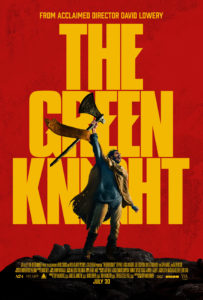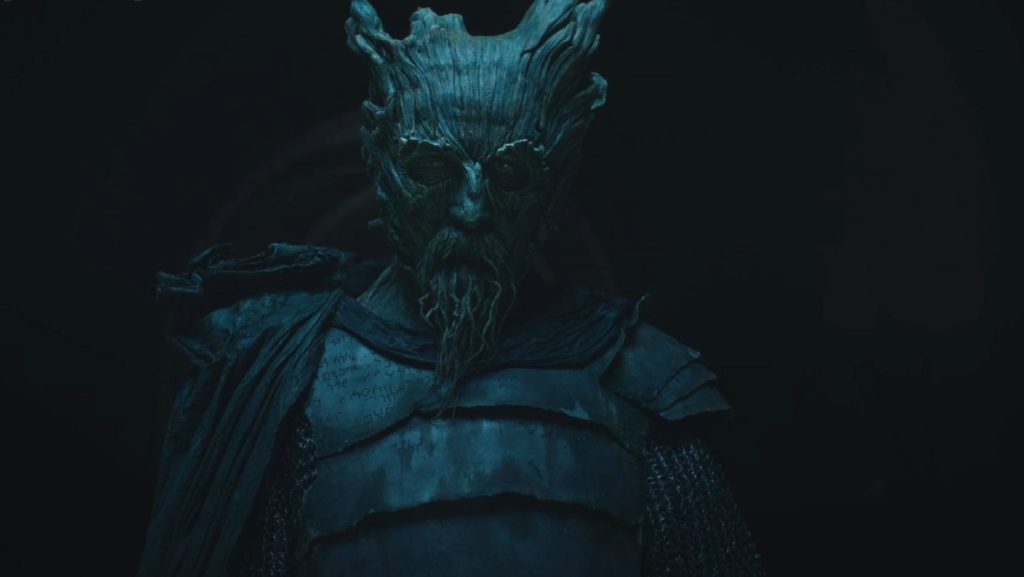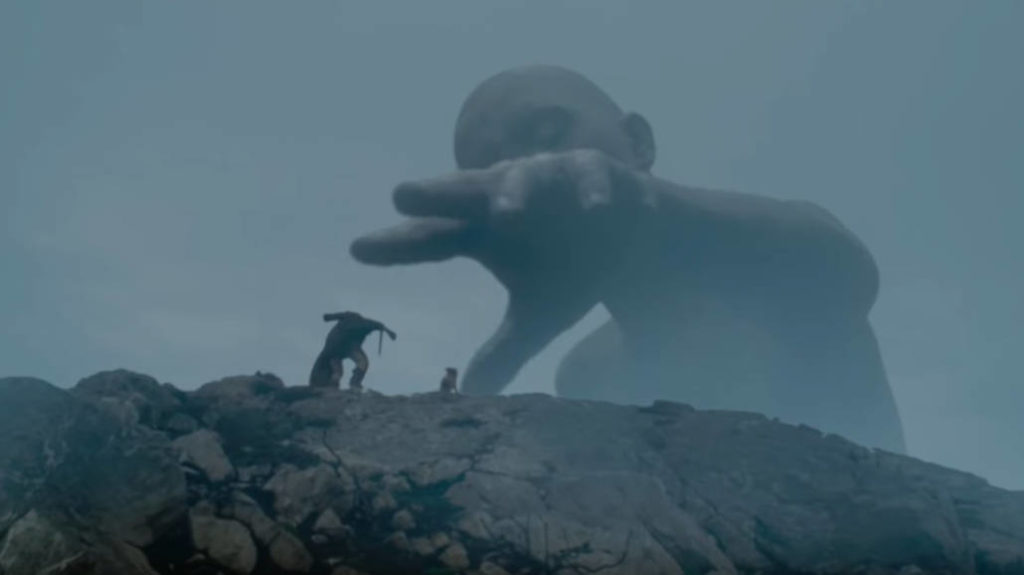Dev Patel Brings all the Colors of the Knight
DIRECTED BY DAVID LOWERY/2021

Though green is the color of the title, many hues, shades, tones and tints permeate the oneiric medieval world of filmmaker David Lowery’s The Green Knight. The saturated, surreal nature of this highly anticipated film is just one element that thrusts it into the rare realm of “Arthurian art house”- perhaps a weird letdown for anyone hoping for “Arthurian Game of Thrones”. Though the high school staple “Sir Gawain and the Green Knight” by Anonymous has been adapted to film at least two previous times (1973’s Sir Gawain and the Green Knight and 1984’s Sword of the Valiant, both, in fact, by director Stephen Weeks), none are likely to exhibit the gonzo meditative verve that Lowery brings to the round table.
Most of this intensely ethereal film finds a perfectly cast Dev Patel as young Gawain wandering the desolate landscape of Dark Ages sights and sounds. This aspect tethers The Green Knight to David Lowery’s singular finest film to date, 2017’s A Ghost Story, in which Casey Affleck’s bedsheeted specter wanders not terrain, but time. (Quite interestingly, the title of aforementioned director Stephen Weeks’ most prominent film is also titled “Ghost Story”, his having materialized in 1974). Both characters are young men of few words, and both are deeply committed to quests that are nebulous at best.
Gawain (pronounced by everyone as “Ghawr-wn”) is a man of deep and earnest commitment to then-dominant notions of chivalry and male honor. Lowery, without being explicit, reinterprets the classic morality tale to explore notions of how perhaps such virtues can also lead to entitlement, self-importance, and delusions of grandeur. To be sure, underneath Gawain’s veneer of approachable nobility lies an askew self-image in which he is King Arthur’s heir to the throne (though Arthur [Sean Harris] and his queen, Guinevere [Kate Dickie], are unnamed on screen), his crown aglow in majestic golden reflection.

Lowery then goes further, asking “to what end?” True to the original tale, Gawain, on his long journey, is faced with fleshly temptation and shown magical mystery. The journey comes in the aftermath of his strange and very public confrontation with the dark and supernatural Green Knight (Ralph Ineson under frightening Groot-like prosthetics), who appears one day unannounced at the entrance of the royal castle. With a darkly resonant voice, the shadowy visitor issues a challenge to duel. Gawain opts to accept, and subsequently beheads the Green Knight. Far from defeated, however, the Knight merely gathers his severed head and departs with the bellowing pronouncement, “One… year… hence!”. Verily, Gawain must now travel to the Green Knight’s lair for a rematch. Death, he knows, is imminent.
Decapitation is an unsettling motif throughout The Green Knight, an episodic film which in no way concedes to explain itself in the typical contemporary sense. A cursory reading of “Sir Gawain and the Green Knight” prior to seeing this film is strongly beneficial. Such a recommendation flies in the face of the solid notion that no movie should require homework to understand it, but Lowery is up to something very particular here.
Besides the heavy air of pending doom and an inherent bleakness within Arthurian aspirations of righteousness, there is also a soft reoccurrence of the feminine. In a world wherein women are secondary and marginalized via longstanding cultural norms, what does it mean that there’s a creepy old woman wearing a blindfold silently holding court over Gawain’s faithful encounter with a cleavage-baring temptress (Alicia Vikander)? What is the significance of the massive, muliebrous drifters into the thick mists- the very embodiment of looming femininity, yet completely inhuman in their apparent migration from this mortal coil of rejection? And… is the future, even in this kingdom, truly female…?

Gawain happenstancially forsakes authentic love for his doom-quest, encountering several disparate characters in his travels, from the ghostly (Erin Kellyman, The Falcon and The Winter Soldier) to the unpredictable (Barry Keoghan’s scavenger) to a persistent fox. By standard logic, all of these encounters happen for a reason. The question is, why. Lowery isn’t telling, at least not via any conventional exposition. It takes knowledge of the original story to get at the whys and maybes of the grand liberties that the director has taken with it- something that this critic admittedly lacked upon initial viewing. The quest in this review, then, if such boldness ought be risked in the service of this most enigmatic and artistically audacious work, is to spare you, the reader, whatever such unnecessary confoundment when approaching very worthy The Green Knight.
And approach him, you must.

